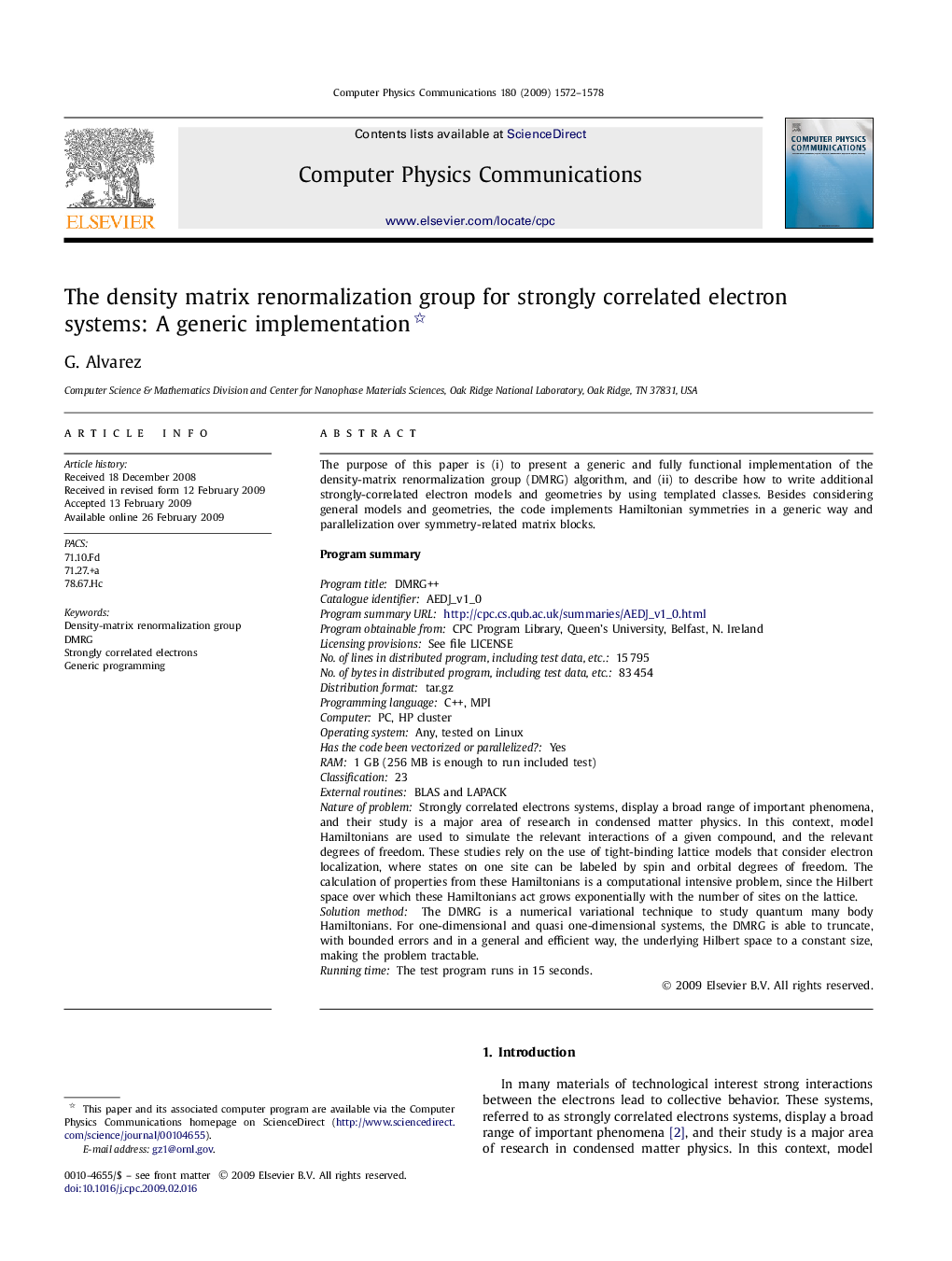| کد مقاله | کد نشریه | سال انتشار | مقاله انگلیسی | نسخه تمام متن |
|---|---|---|---|---|
| 502731 | 863720 | 2009 | 7 صفحه PDF | دانلود رایگان |

The purpose of this paper is (i) to present a generic and fully functional implementation of the density-matrix renormalization group (DMRG) algorithm, and (ii) to describe how to write additional strongly-correlated electron models and geometries by using templated classes. Besides considering general models and geometries, the code implements Hamiltonian symmetries in a generic way and parallelization over symmetry-related matrix blocks.Program summaryProgram title: DMRG++Catalogue identifier: AEDJ_v1_0Program summary URL:http://cpc.cs.qub.ac.uk/summaries/AEDJ_v1_0.htmlProgram obtainable from: CPC Program Library, Queen's University, Belfast, N. IrelandLicensing provisions: See file LICENSENo. of lines in distributed program, including test data, etc.: 15 795No. of bytes in distributed program, including test data, etc.: 83 454Distribution format: tar.gzProgramming language: C++, MPIComputer: PC, HP clusterOperating system: Any, tested on LinuxHas the code been vectorized or parallelized?: YesRAM: 1 GB (256 MB is enough to run included test)Classification: 23External routines: BLAS and LAPACKNature of problem: Strongly correlated electrons systems, display a broad range of important phenomena, and their study is a major area of research in condensed matter physics. In this context, model Hamiltonians are used to simulate the relevant interactions of a given compound, and the relevant degrees of freedom. These studies rely on the use of tight-binding lattice models that consider electron localization, where states on one site can be labeled by spin and orbital degrees of freedom. The calculation of properties from these Hamiltonians is a computational intensive problem, since the Hilbert space over which these Hamiltonians act grows exponentially with the number of sites on the lattice.Solution method: The DMRG is a numerical variational technique to study quantum many body Hamiltonians. For one-dimensional and quasi one-dimensional systems, the DMRG is able to truncate, with bounded errors and in a general and efficient way, the underlying Hilbert space to a constant size, making the problem tractable.Running time: The test program runs in 15 seconds.
Journal: Computer Physics Communications - Volume 180, Issue 9, September 2009, Pages 1572–1578